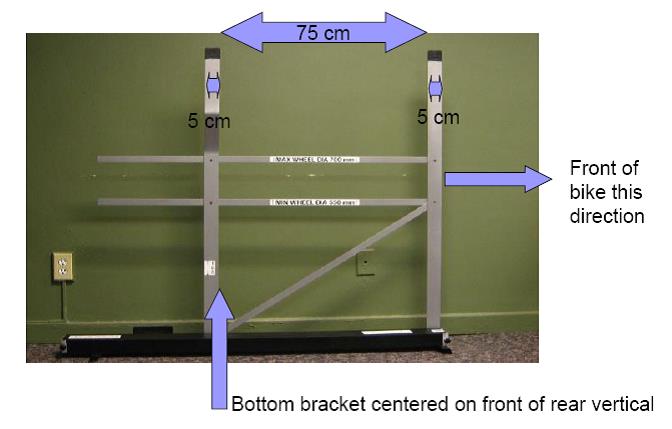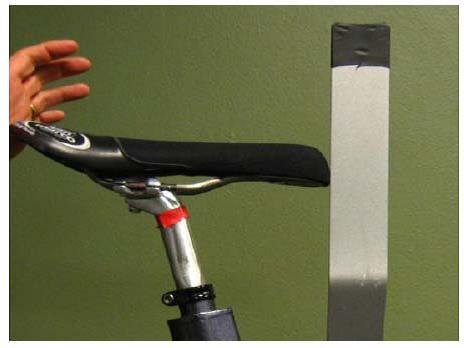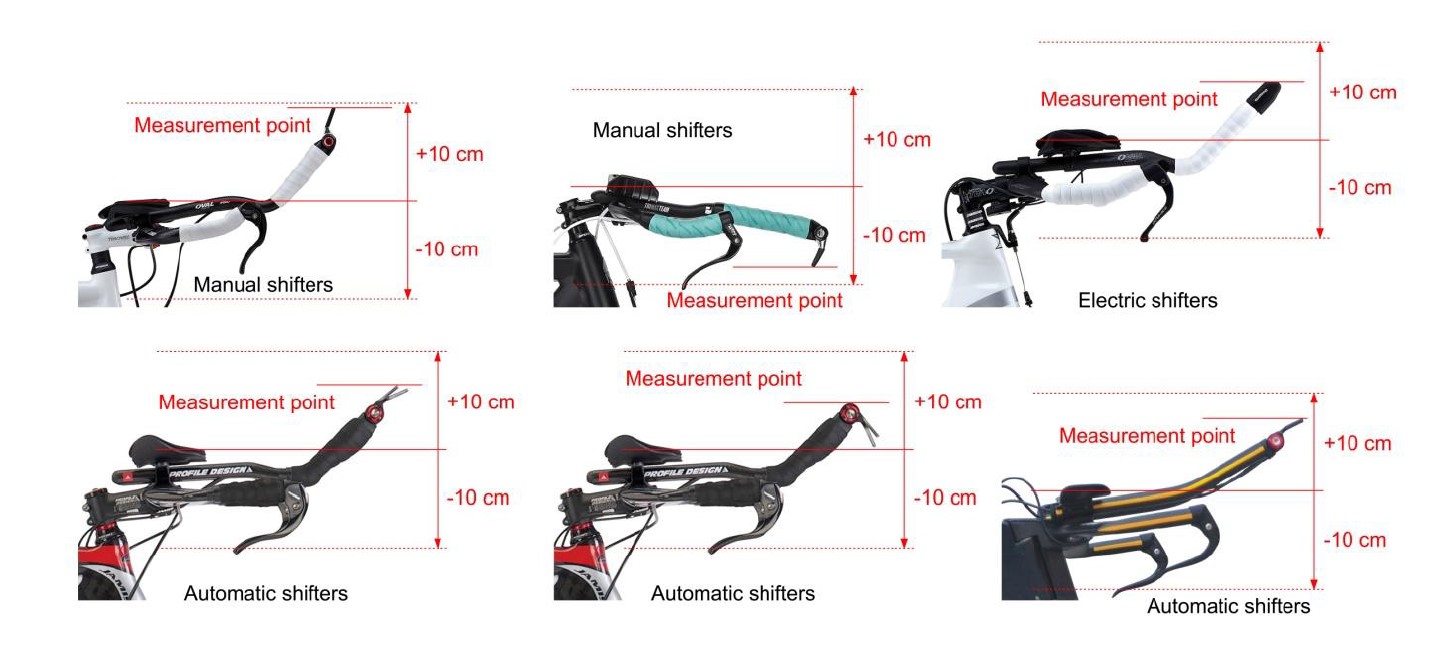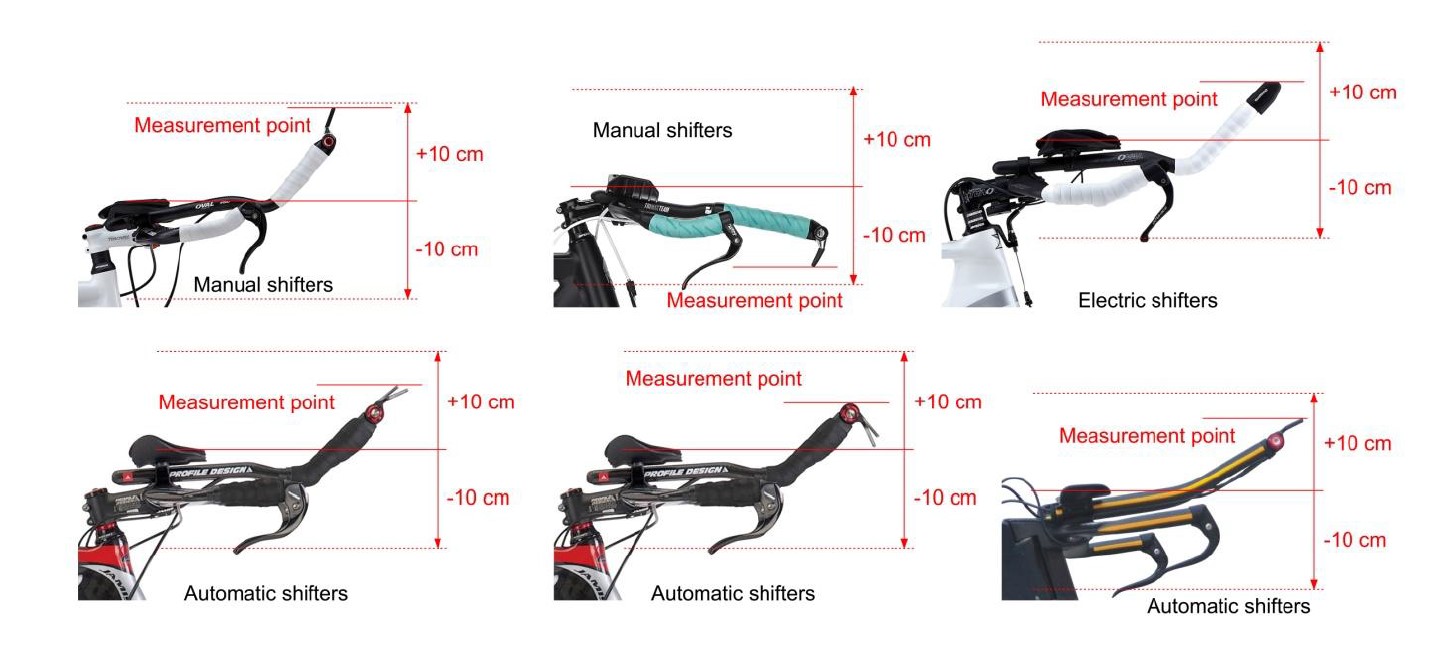Bike Weight
For all road, cyclo-cross and track events there is a minimum weight requirement of 6.8
kg . Ultra light road bikes and many track bikes may weigh less than the minimum weight. Water bottles, tool bags, pumps and such items that can simply be removed from the bike are not counted in the minimum required weight.
Handlebars
The regulations limit the normal forward reach of standard handlebars to 5 cm beyond the front wheel axle. This does not include the brake levers. As with most bicycles, the
manufacturing industry makes compliance happen almost regardless of the components
or frame. Handlebars of any kind must be lower than a level line drawn from the top of
the saddle. The lowest part of the bars must also be higher than the top of the wheels.

Wheels
Wheels must be of the same diameter, between 550 mm and 700 mm, including the tyre.
Bike Fit and Adjustment
The rider’s points of supports; saddles, handlebars and pedals, have dimensional and
adjustment limits that affect the rider’s position on the bicycle. The regulations for
rider’s fit on the bicycle vary between general endurance and pure speed events. First,
the standard fit details are given.
Following this, exceptions for body fit, or morphological exceptions will be reviewed.
There are two exceptions available for morphological reasons, of which ONLY ONE can be availed of by a rider.
Saddle Adjustment
For endurance or all mass start events; road, track and cyclo-cross, the nose of the
saddle must be a minimum of 5 cm behind a vertical line drawn up through the center of
the bottom bracket. For speed events (track); sprint, 500m, kilometer and team
sprint, the nose of the saddle may move forward inside this 5 cm dimension, but never beyond the center of the crank. These measurements are confirmed using a jig:


This saddle meets the standard
dimension limits. It is 5 cm
legal for track speed type events.
For time trial events, handlebar extensions may be added. These extensions may offer
forearm support, but cannot be designed to allow pulling or applying leverage against the handlebars. The maximum normal forward horizontal dimension of the handlebar extensions (including accessories) is 75 cm and is measured horizontally from the center of the bottom bracket axle to the end of the extension. The measuring point is always tip of any gear controller extended to its most horizontal.

The forearms should also be horizontal and any parts of the handlebar, extension or accessories must be within the +/- 10cm of the elbow/forearm supports. For this measurement any moving parts must be placed in the most vertical position.

Saddle Position Morphology and Exceptions TT
As noted above, the regulation indicates the saddle must be 5 cm behind this line for most events. A smaller rider can move their saddle forward of this position, but no further forward than the center of the bottom bracket and must have their handlebar measuring point at a maximum of 75cm from this point.
Handlebar Extension Morphology
Extensions, whether a clip-on device or full replacement of the handlebar, are designed to offer the rider a more aerodynamic position, with an extended reach. Enforcement of handlebar regulations is to regulate two things; “superman” position (extended forward reach) and a level arm position.
If a rider is taller and has his saddle tip 5cm behind the center of the bottom bracket, he is allowed, if required, to extend the measuring point out to 80cm.
Very Tall Riders
For riders that are 190 cm tall or taller, the horizontal distance between the vertical lines passing through the bottom bracket axle and the extremity of the handlebar extensions including all accessories may be extended to 85 cm but only if the saddle tip remains at least 5cm behind the center of the bottom bracket.
The extra length tolerance will not be granted on the day of the race, except for one day time trials. During those events, the riders claiming for the extra length tolerance will have to come at least 2 hours before the start of the race for the height check – riders will be measured in sock soles with no headgear. For National Championships it will be 2 hours before the start of the First Rider for the series of events.
Saddles
The saddle must be between 24 and 30cm long and be horizontal – a tolerance is allowed on the saddle level of 2.5 degress +/- 0.5 degree. Any saddle measuring over 3 degrees must be readjusted.

Timing of Bike Check
Plan accordingly. The emphasis of compliance review is largely focused on, but not exclusively, on time trial and track events. Bikes are first checked for overall equipment, weight and dimensional compliance. If all the regulations are met, the bike is passed with no further testing required. Morphological tests no longer take place and it is the bike that is checked to ensure that it is within the allowable limits stated above.
Once a bike has been verified, however, it cannot leave the measurement area without being re-verified before the start of the event.
The UCI regulations are available at www.uci.ch and are found in Part 1, General Regulations under Section 1.3.
